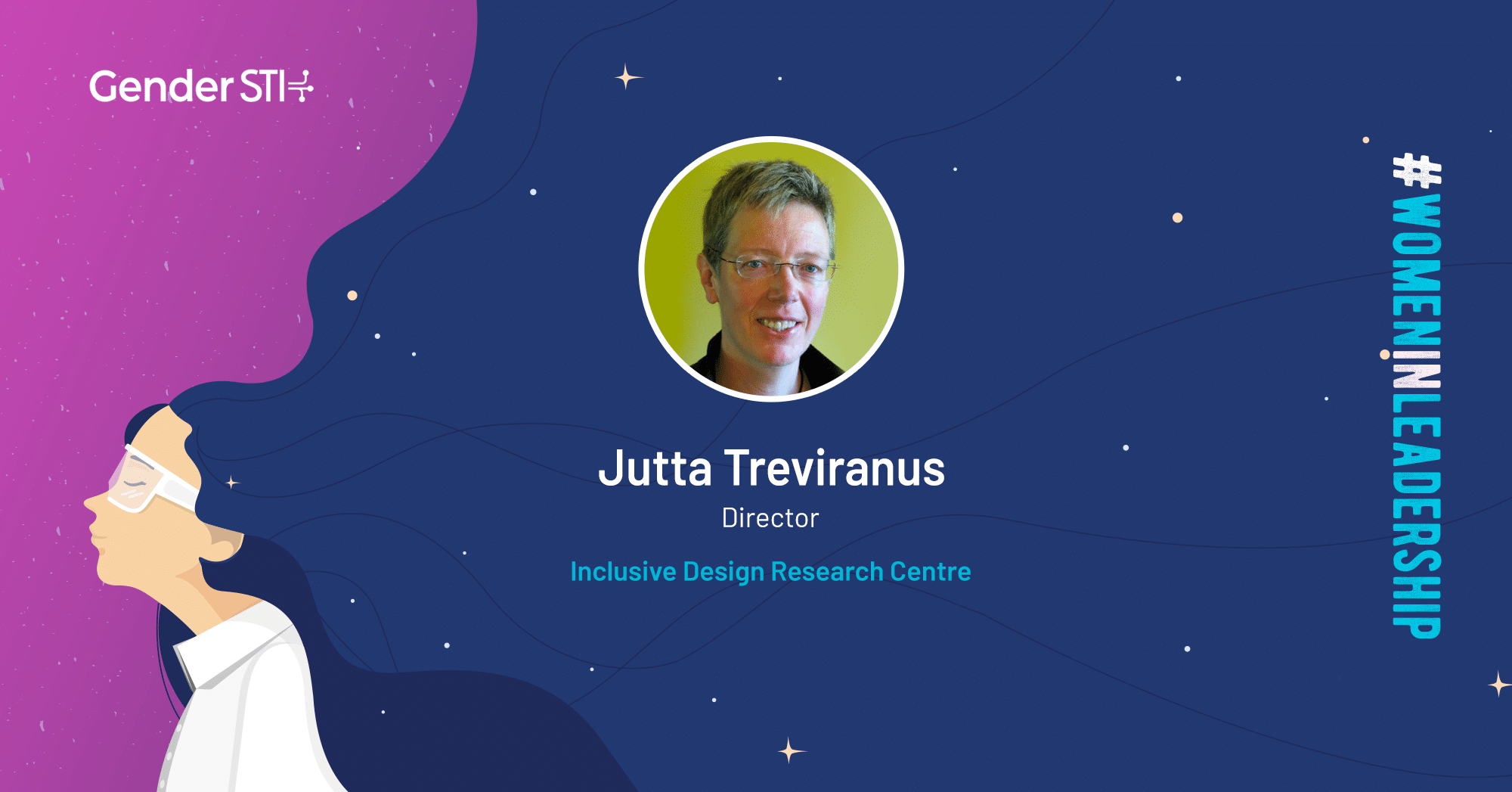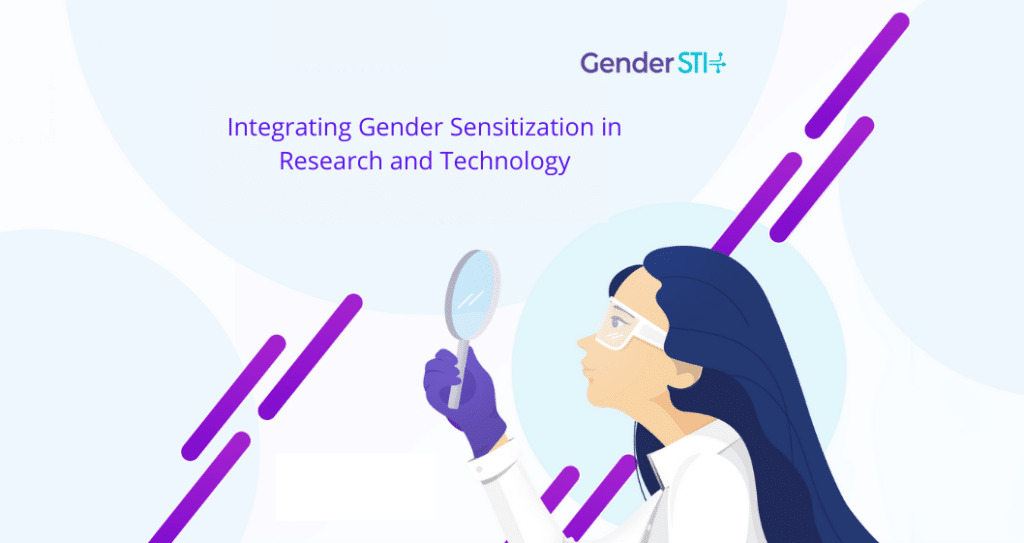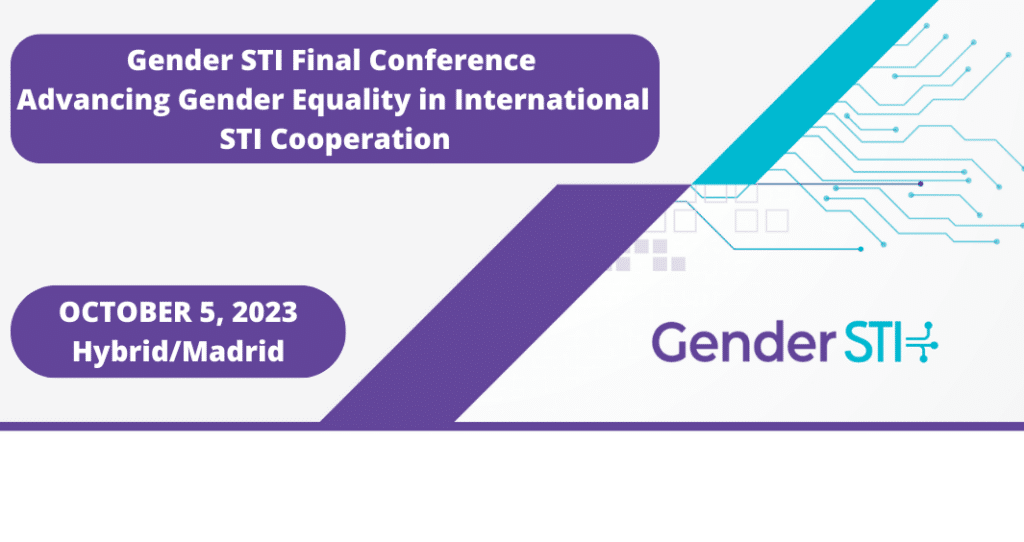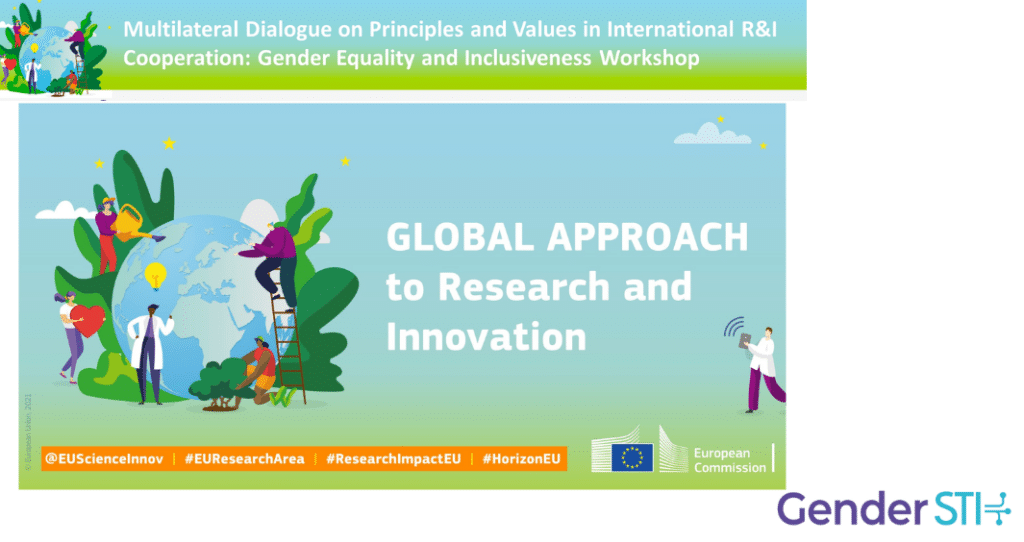Jutta Treviranus was nominated for Gender STI's #WomenInLeadership Campaign, which celebrates women leaders in science, technology and innovation, by Inmark Europa in Spain.
She is the director and founder of the Inclusive Design Research Centre (IDRC) and professor at OCAD University in Toronto. Since 1980, she has been proactively intervening in emerging technical practices to ensure that they recognize, understand and serve the full range of human diversity.
Treviranus spoke to Gender STI about her experience as a woman leader in honor of International Women's Day 2021.
Can you tell us a bit about your job and your responsibilities?
I’m the director of the Inclusive Design Research Centre, which I established in 1993. I’m also a professor in an inclusive design graduate program I founded at OCAD University, in Toronto. For many years I sought out initiatives that would address some of the critical needs of people at the margins and the potential opportunities and risks of emerging technology systems. I was repeatedly disappointed and found myself in conflict with or sidelined by the established institutions. I decided I needed to start something to nurture and bring together communities of practice to address the accelerating inequities. I’m now at the center of an amazing, growing, global community that proactively addresses emerging sociotechnical systems to make sure they are inclusive of the full range of human difference.
Did you face any challenges on your journey to become a woman leader? How did you overcome them?
The goal of the IDRC was to bring about a fundamental culture change in and through technology and innovation. This meant I was taking on an overwhelming challenge. I benefited from the fact that people in established hierarchies underestimated me as a woman. I also entered the field and kept up with emerging technology at a time when many people were not very technology literate. I was often the only woman in many of the initiatives I participated in. I used the element of surprise when people challenged my knowledge -- out geeking the geeks with “tech speak.” Much of our work occurred “under the radar,” until we were so impactful that we couldn’t be ignored.
I also chose a completely different approach for achieving our goals as an organization (some have called it a very “un-male” approach). We chose to co-design with people that could not use or had difficulty with current designs – or the people that were marginalized by traditional design. Our work was bottom-up, and the expertise we valued was lived experience, not power, popularity or wealth. Rather than selling or pushing our work, we openly licensed everything we did. For example, rather than branding and protecting our software IP, we created reusable “white label” components and contributed them to popular component libraries to be broadly integrated. Rather than restrict access to our content, we shared it openly. Rather than competing with other initiatives, we fostered skills in the organizations we worked with. We moved on to the next challenge when anyone could take on the work. This meant that our organization could be agile, proactive and adaptable to change.
What goals do you have as a leader?
My goals as a leader echo my goals as an inclusive designer. My goal is to foster a very diverse and inclusive community. I want to create a community that includes the widest spectrum of perspectives and enables the full participation of people with lived experience of the margins of our society. That is how we foster dynamic resilience, and a community that can learn from mistakes, has more innovative choices, is cognizant of the weak signals of issues to come, and cares for us during inevitable crises.
How would you describe the gender balance in decision making in science, technology and innovation (STI)?
Not only is the gender balance biased toward men, but decision tools in STI are biased against diversity, and unprepared for complexity and accelerating change. Our favoured forms of evidence require statistical significance, our planning tools use linear logic, our design systems seek a single winning/best/optimal solution, our markets seek the largest customer base, and our media amplifies the popular. Our evidence is often evidence for the majority, meaning our decisions are wrong for minorities and outliers. This means that homogeneity and the simplicity that comes with power and privilege, reigns. Power, wealth and popularity get amplified through these systems. Our machine learning tools amplify and automate this further. This pattern feeds accelerating disparity. It means that anyone that happens to be an outlier or small minority faces insurmountable bias. Because of historic sexism, women are overrepresented in many of the other forms of marginalization.
This goes beyond addressing a power imbalance. We need to address more than gender bias. We need to change the “game,” not compete in a “game” that is unfair.
What would you tell young girls and women who would like to become leaders in their professional fields one day?
Demand that the rules be changed, rather than conform to rules that are unfair. Always ask why? Do not compromise your values. Build a caring community. Use your influence and attention to make sure people who are vulnerable are supported, so the system will care for you when you are vulnerable. Be playful. See mistakes and failure as a powerful learning opportunity.
As you may know, the Gender STI project focuses on promoting gender equality in international cooperation in STI. Do you have any ideas on how we could promote gender equality in this area?
Join forces with other groups seeking equity. Through COVID we know that “none of us are safe until all of us are safe.” Creating allegiances across the other equity seeking efforts will be mutually beneficial. We should also work to create more equitable decision tools that do not reduce diversity and complexity.
What do you think needs to be done to increase the number of women leaders in STI?
If we lead the change to a more equitable science, technology and innovation (STI) practice, that supports diversity and does not reduce complexity, we will be leaders in the changed STI. I do not want to lead in a system that perpetuates a bias against minorities.
Follow Gender STI's #WomenInLeadership campaign on Twitter, LinkedIn and Facebook for more great interviews. Join the conversation using #WomenInLeadership, #IWD2021 and #GenderSTI.



